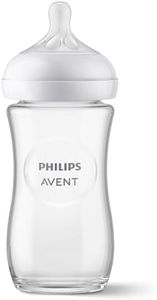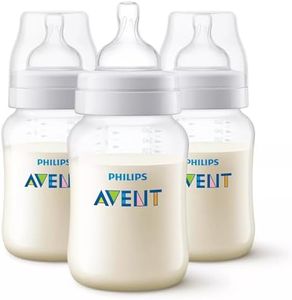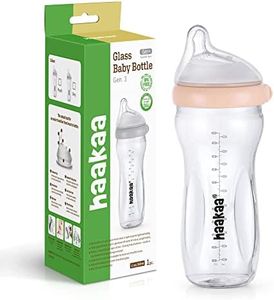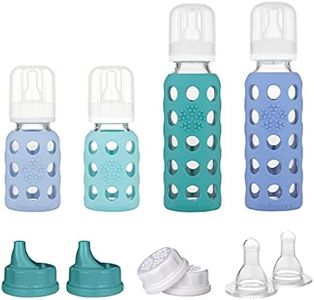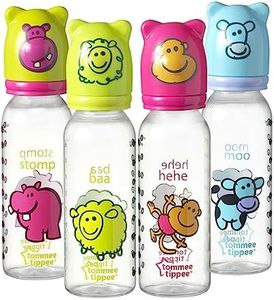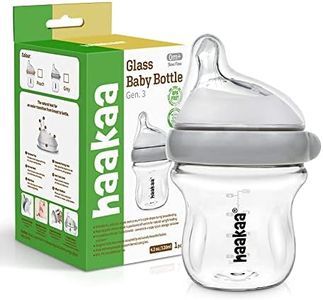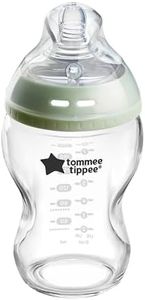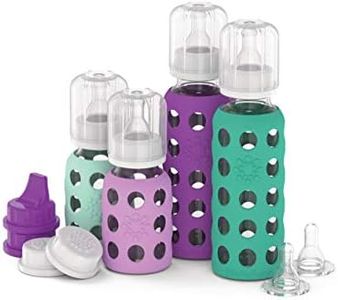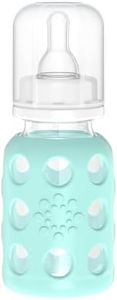We Use CookiesWe use cookies to enhance the security, performance,
functionality and for analytical and promotional activities. By continuing to browse this site you
are agreeing to our privacy policy
10 Best Glass Baby Bottles
From leading brands and best sellers available on the web.Buying Guide for the Best Glass Baby Bottles
Choosing the right glass baby bottle is important for your baby's safety, comfort, and your own convenience. When picking a bottle, you want something that is safe, durable, and easy for you to handle and clean. Glass bottles are popular because they don't contain plastic chemicals, are easy to sterilize, and don't retain odors or stains. However, there are a few key differences in glass bottles that matter, so it's good to know what to look for before making your choice.Bottle Size/CapacityBottle size refers to how much liquid the bottle can hold, usually measured in ounces or milliliters. This matters because younger babies eat less, while older babies need more milk or formula per feeding. Bottles come in smaller sizes for newborns and larger sizes for older infants or toddlers. If you're buying for a newborn, start with smaller bottles, as they are easier for little hands and reduce formula waste. As your child grows and feeding amounts increase, you may want to transition to larger bottles.
Nipple Type and FlowThe nipple of the bottle comes in different shapes and flow rates. Flow rate describes how quickly the liquid passes through the nipple, which can greatly affect how easily your baby can feed. Newborns usually need 'slow flow' nipples to prevent choking or overeating, while older babies can handle 'medium' or 'fast flow'. Also, nipple shapes may mimic breastfeeding or be more traditional. Choose a flow suitable for your baby's age and feeding preference, and be ready to switch as they grow or their needs change.
Bottle Shape and GripThe shape of a glass baby bottle affects how easy it is for parents and babies to hold. Some bottles are straight, which are simple to clean, while others are contoured with indentations or curves for easier gripping. Bottles designed with ergonomic shapes help babies learn to hold the bottle themselves, which can be useful as they grow older. If you have concerns about handling or want to encourage your baby to self-feed, look for a bottle with a shape that suits your needs.
Weight and DurabilityGlass baby bottles are heavier than plastic ones, and their thickness can vary. Thicker glass is generally sturdier and more resistant to breaking if dropped, but it will weigh more. Lighter bottles are easier for travel or for the baby to hold, but may be more fragile. Consider your lifestyle and how you'll use the bottle—if you'll be carrying bottles in a diaper bag often, weight and durability become extra important.
Anti-Colic FeaturesSome bottles come with built-in systems or special nipples designed to reduce air intake during feeding, helping prevent gas and colic. These features often include extra vents or unique internal designs. If your baby is prone to gas or fussiness after feeding, choosing a bottle with anti-colic features may improve their feeding experience and reduce discomfort.
Ease of CleaningA bottle that is easy to take apart and clean ensures good hygiene for your baby. Glass bottles are typically easier to sterilize, but check for wide neck openings and fewer parts, which make cleaning faster and more thorough. If you'll be cleaning bottles often, opt for one with a simple design and parts that are dishwasher safe.
Protective SleevesMany glass baby bottles include or offer silicone sleeves that fit around the bottle. These sleeves help absorb shocks and reduce the chance of the glass breaking if the bottle is dropped. If you're worried about breakage, especially if the bottle will be used by older babies learning to self-feed, consider a bottle that comes with a good protective sleeve.
